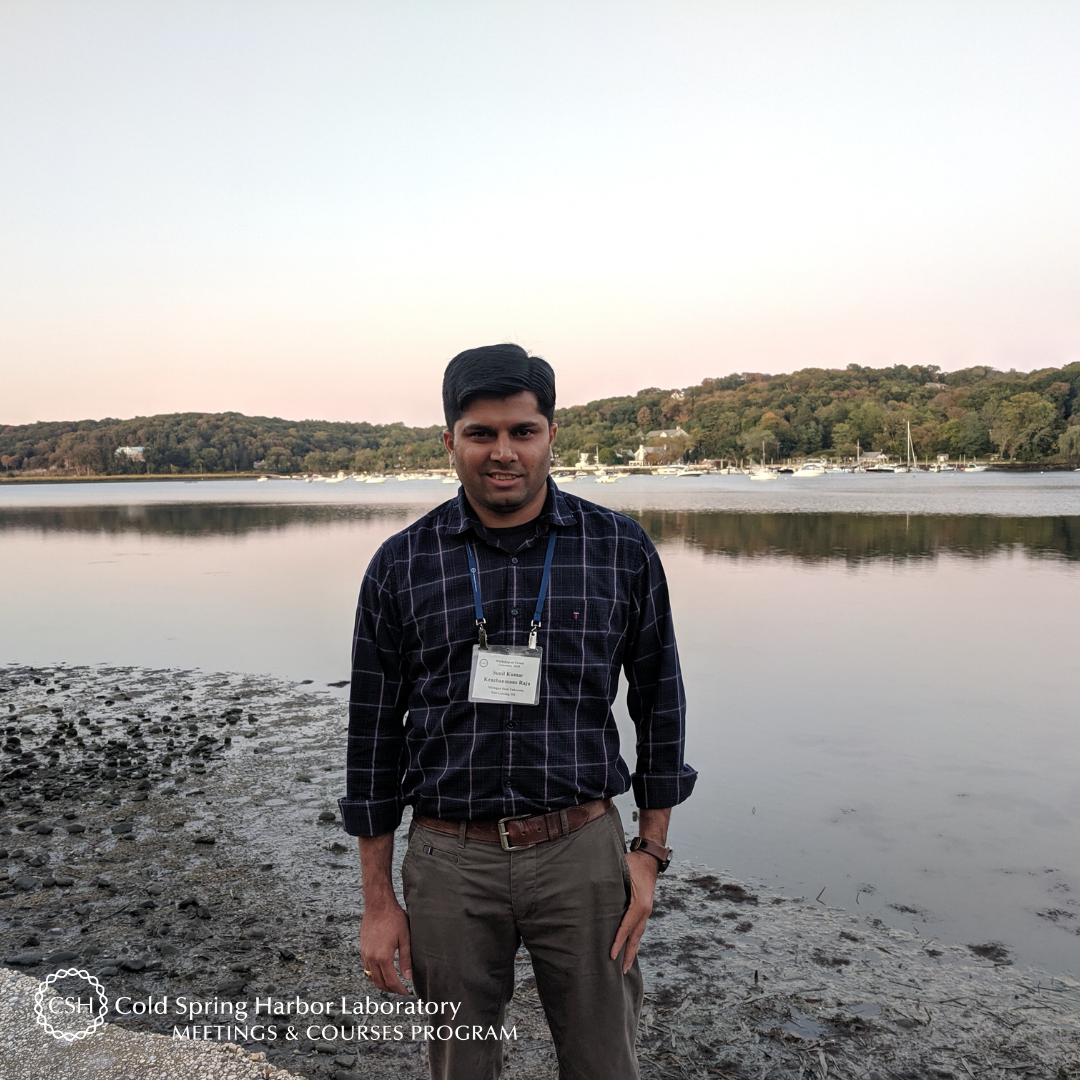Meet Kelsey Scott of The Ohio State University! A member of Jason Slot’s lab within the Department of Plant Pathology, the PhD student is about halfway through her training at the annual course on Programming for Biology. This is her first course at CSHL and she “had no idea what to expect, besides prior attendees calling it “coding boot camp”.” The course, as usual, delivers and “has turned out to be a lovely opportunity to work closely and learn alongside a great group of people.” So much so that if Kelsey has the chance to return for another course, she “will definitely take it.”
What are your research interests? What are you working on?
I’m interested in identifying the genomic attributes of fungi associated with particular lifestyles, focusing on secondary metabolite-related gene clusters. For example, what’s genetically different about soil-dwelling fungi compared to fungi that eat other fungi, or non-pathogenic fungi that live inside a plant?
How did you decide to make this the focus of your research?
This project is interesting to me because of the technology I use to generate my data, both the continually-developing sequencing technology as well as the software used to process the data. I love how there are constant technological improvements and we can achieve goals previously thought to be impossible.
How did your scientific journey begin?
Ever since I was a kid I knew I wanted to become a scientist, but I always assumed that I would only ever work with plants. Dr. Cynthia Briggs, one of my favorite professors in undergrad, encouraged me to check out the field of plant pathology so I could work with both plants and my other love, fungi. Fast forward a few years and now I’m in a mycology lab in a plant pathology department, a perfect fit!
Was there something specific about the Programming for Biology course that drew you to apply?
My research depends on using a long and involved pipeline to obtain genome annotations from raw genome sequence data; I wanted to learn how to automate this pipeline and other routine processes so I have more time to focus on my research questions. I was especially interested in the workshop seminars on genome sequencing wet lab methods and genome assembly software, so I could learn how to improve my own techniques.
What is your key takeaway from the Course?
My key takeaway from this course is that just about any data manipulation can be made faster and more efficient with a Python script.
What and/or how will you apply what you’ve picked up from the Course to your work?
I’ve tried to learn Python coding using online modules and classes, but nothing ever stuck until I attended this course. I’ve been at CSHL just over a week and I already feel so much more confident in my skills--I’m excited to write scripts that can process my large datasets automatically.
If someone curious in attending this course asked you for feedback or advice on it, what would you tell him/her?
I highly recommend this workshop for anyone that has little to no experience in Python coding and wants to apply these skills to biology-related research, especially if they need to handle large amounts of data. This workshop is a fast-paced and immersive experience, and the instructors and TAs work tirelessly to provide their students with a great learning opportunity.
What do you like most about your time at CSHL?
I love how close the beach is! Whenever I have the chance, I walk to the beach to take pictures and search for horseshoe crabs.
Kelsey received financial support from National Human Genome Research Institute (NHGRI) to cover a portion of her course tuition. On behalf of Kelsey, thank you to NHGRI for supporting and enabling our young scientists to participate in training courses where they expand their skills, knowledge, and network.
Thank you to Kelsey for being this week's featured visitor. To meet other featured scientists - and discover the wide range of science that takes part in a CSHL meeting or course - go here.






